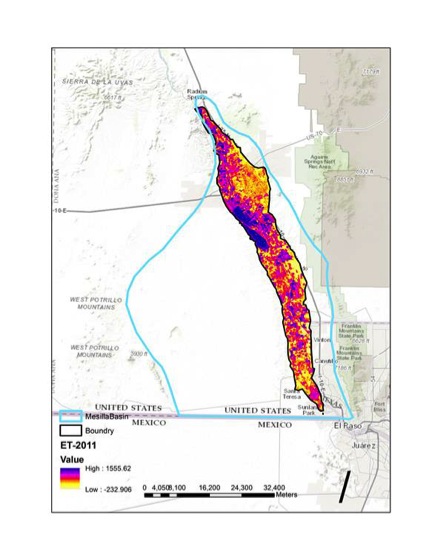Zohrab Samani, a New Mexico State University civil engineering professor, and his graduate student Pooneh Pahlevani are leading a research project examining water accessibility in southern New Mexico. The goal of the project, “Evaluating water budget for the Mesilla Bolson Aquifer,” is to develop a hydrologic model that can predict future water storage and sustainability of the Mesilla Valley Aquifer known as the Mesilla Bolson.
Dona Ana County’s groundwater is the Mesilla Bolson, which supplies drinking water for Las Cruces and other small communities in the county in addition to parts of El Paso and Juarez. The aquifer is the lone water source for agriculture during dry years when there is little river flow.
“The aquifer is like a bank account, which is vital for sustainability of agriculture, and quality of life in southern New Mexico,” Samani said. “The aquifer gains water during wet years and loses water during dry years. We have been in drought during the past 15 years, which means we are pulling the additional needed water from the aquifer, and the water level is dropping. There is an urgent need to figure out how the water budget has changed in the past and will change in the future as we face climate change, population growth, drought and land use.”
New Mexico legislators sponsored the project through the New Mexico Water Resources Research Institute.
“The result of the aquifer project has significant implications in the future planning and management of the water resources in our area,” he said. “Our results show that we have been losing water from the aquifer storage during the past 25 years, and the loss has accelerated since 2010. The results of our research show that if serious steps are not taken in conserving water and curtailing the excessive withdrawal the aquifer will continue to deplete and could eventually dry up.”

